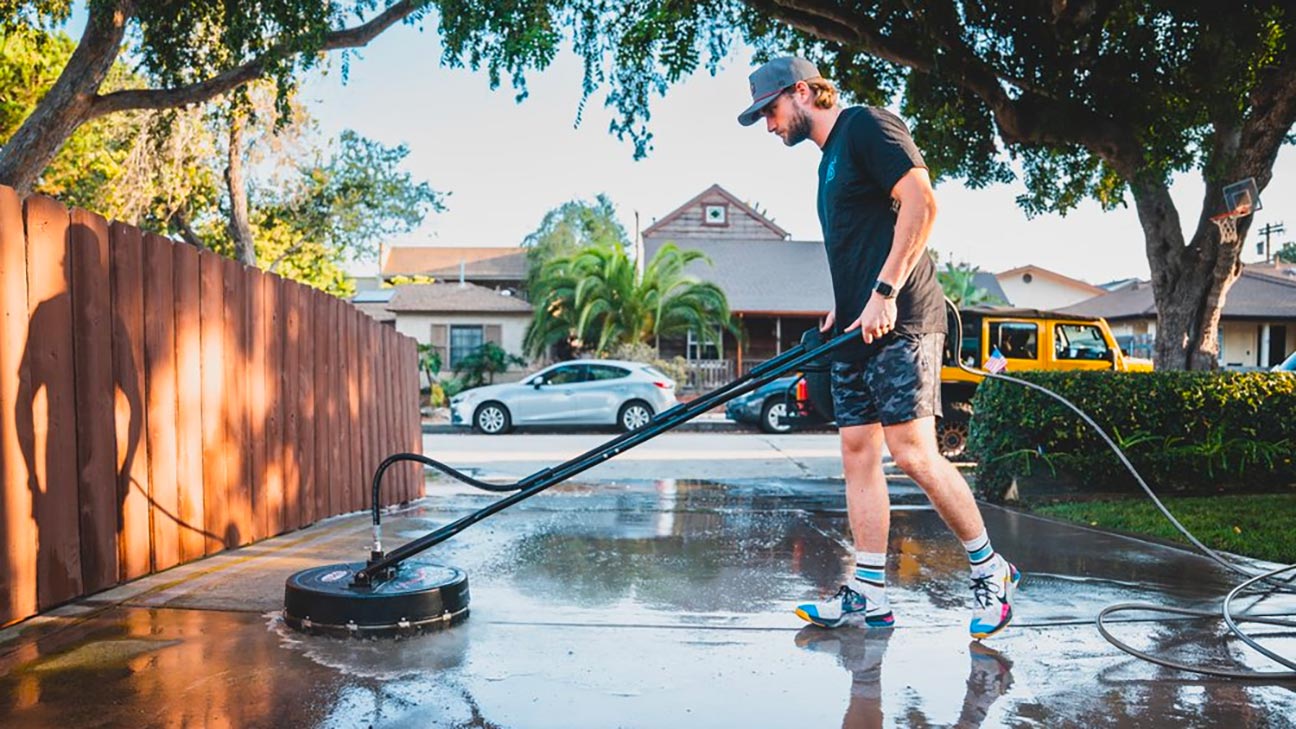The Craft of Pressure Washing Techniques: Methods for Any Surface
Pressure washing is more than just a cleaning technique; it's an art that can breathe new life into surfaces in your home and business. If you're a homeowner wanting to enhance your property's aesthetic or a commercial proprietor looking to maintain a clean exterior, understanding the methods and advantages of pressure washing is crucial. This resource will introduce you to the fundamentals of pressure washing, exploring its advantages and the differences between various washing methods.

From eliminating stubborn mold and mildew to refreshing decks and driveways, pressure washing can tackle a variety of cleaning jobs. However, it's crucial to know how to approach each surface correctly to prevent harm and achieve the best results. In this article, we will discuss all you need to know about pressure washing, including safety tips, maintenance schedules, and the best practices for various materials. Whether you're considering a DIY approach or hiring a professional, this comprehensive guide will provide you with the knowledge you require to make wise choices for your property.
Grasping Pressure Washing
Power washing is a formidable cleaning technique that employs high pressure water spray to get rid of dirt, contaminants, mold, and various debris from surfaces. This technique is widely used for washing multiple outdoor spaces, including decks, paths, patios, and houses. By utilizing a mechanical pressure washer, individuals can effectively enhance their cleaning efforts without just scrubbing or chemical solutions. The pressure of the water can penetrate well into absorbent materials, making it especially effective for tough stains.
One of the primary positives of pressure washing is its effectiveness. It not only conserves time relative to conventional cleaning methods but also provides superior results. A power washer can rapidly clear accumulated grime quickly, allowing businesses to keep clean and appealing outdoor spaces with less effort. Additionally, regular pressure washing helps in protecting the quality of areas, avoiding deterioration caused by mold or mildew, and finally extending the durability of the material.
Another significant aspect to note is the contrast between pressure washing and gentle washing. While power washing uses high pressure water to obtain quick results, gentle washing uses a milder technique, merging reduced pressure with targeted cleaning solutions. This approach is especially appropriate for fragile materials such as ceilings and painted surfaces, where intense pressure could cause detriment. Comprehending these techniques is essential to determining the best method for your specific cleaning requirements.
Pressure Washing Techniques
When considering pressure washing, it's important to think about the various methods appropriate for different types of surfaces. For durable surfaces like driveways and sidewalks, a direct stream is frequently the ideal method. Using a narrow nozzle permits concentrated pressure to lift tough stains, including oil and grime. On the other hand, when dealing with fragile areas like wooden decks or siding, a fan spray technique is preferable. This technique disperses the water, thereby lowering pressure and lessening the risk of harming softer surfaces.
For cleaning roofs, it’s essential to adopt a soft washing approach rather than standard pressure washing. Soft washing utilizes low pressure alongside specialized cleaning solutions to get rid of algae, dirt, and contaminants without adversely affecting roofing materials. This approach not only safeguards the condition of your roof but also helps prevent potential leaks that could result from high-pressure methods.
Combining pressure washing with the right cleaning solutions can enhance the effectiveness of the process. For surfaces made of concrete, utilizing a degreaser can assist in dissolving oil stains before pressure washing. Meanwhile, for outdoor furniture, a soft soap solution may be incorporated into the water stream to clean safely without jeopardizing the finish. By comprehending the suitable techniques for each surface, you can obtain the best cleaning results while preserving the condition of your property.
Advantages and Best Practices
Power washing offers a wide range of benefits for both home and commercial properties. One of the most important benefits is the enhancement of curb appeal. A tidy exterior can make a major difference in how a property is perceived, potentially boosting its worth. Additionally, regular pressure washing helps to remove harmful substances like mold, mildew, and soil, which can lead to long-term damage if left untreated. This preventive maintenance not only enhances the appearance but also extends the lifespan of surfaces.
When it comes to best practices for pressure washing, preparation is essential. Before starting the process, it is necessary to evaluate the surfaces that need cleaning and choose the appropriate nozzle and pressure settings. Lower pressures are typically best for fragile surfaces like wood, while increased pressures can be used on concrete or masonry. Using green cleaning solutions can also enhance the efficacy of pressure washing while reducing environmental impact. Additionally, protecting surrounding https://valleywashpros.com/ from overspray is necessary to avoid accidental damage.
Finally, the timing is important for effective pressure washing. The ideal time to pressure wash your home is during moderate weather conditions, avoiding intense heat or cold. Moreover, ensuring that surfaces are clear and dry before sealing or painting helps realize best results. Regular maintenance—usually suggested on an annual or every two years basis—will keep your property looking its finest while preventing the buildup of grime and debris. Adhering to these guidelines can lead to a satisfactory and productive pressure washing experience.